When it comes to improving your cycling performance, it’s not just about working hard—it’s about working smart. VO2 max intervals are one of the most effective ways to fast-track your fitness, and more importantly, they help you handle the unpredictable efforts reflected in race power profiles during competitive cycling.
These Vo2 max sessions not only save you time but also make sure you’re ready for the decisive moments in a race when your performance really matters.
While threshold power is crucial for long endurance efforts, it’s at those critical junctures in a race—when attacks fly and gaps open—that your ability to push watts near your VO2 max comes into play.
Power Meter Data Insights: Tour de France
A prime example of this was during Stage 1 of the 2023 Tour de France, where the front of the peloton essentially had an on-road VO2 max test on the Côte du Pike. They were hammering at near-maximum effort for nearly five minutes.
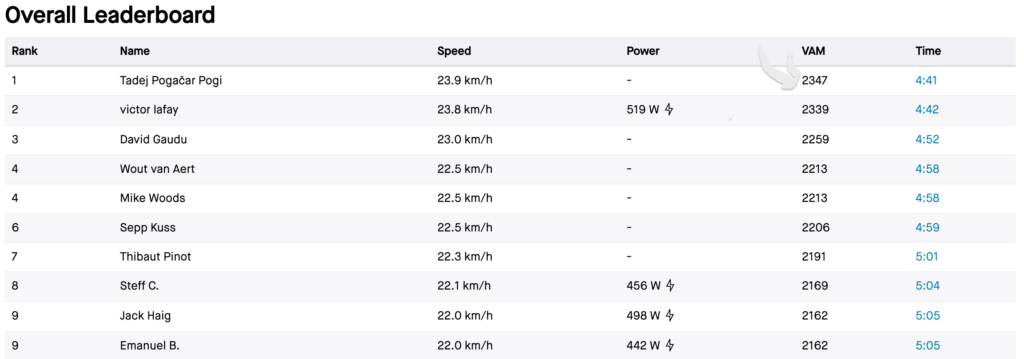
All the top riders? They excelled at this five-minute climb (not all riders use the Strava app, though).
But here’s the thing—VO2 max training isn’t just about these high-stakes moments.
There’s another reason I believe VO2 max intervals are indispensable for any serious cyclist preparing for competition.
Having coached a range of riders, from juniors competing in U16 and U18 national races to elite professionals racing at Paris-Roubaix and the Giro d’Italia, I’ve spent countless hours analyzing power meter data and profiles.
And let me tell you, the insights are revealing.
When I first started coaching road cyclists back in the early 2000s, we didn’t have the luxury of power meters; heart rate data was all we had to work with.
You’d see heart rate files from races follow a familiar bell curve. It’s easy to assume that a power meter file would show a similar distribution. But when you dive into the power meter data from those same races, the story is quite different.
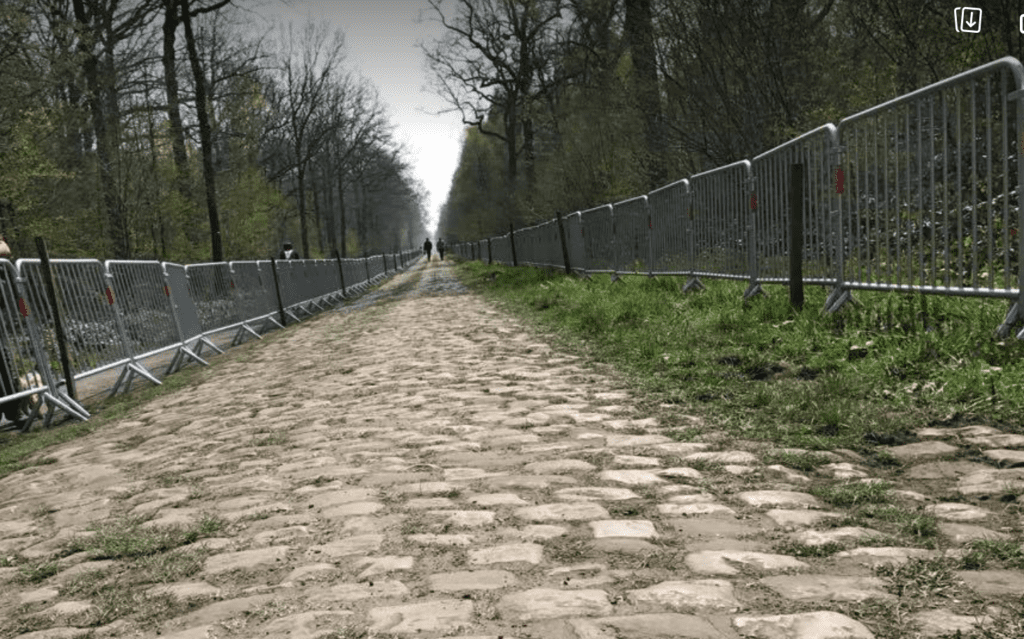
The Hidden Complexity of Race Power Profiles
Here’s the first surprise: In any given race, a significant portion of time—often 15 to 25%—is spent with zero pedaling. Yes, you read that right. Whether it’s descending, coasting in the slipstream, or positioning in the bunch, there are long periods where your power output is flat-out zero.
But at the other end of the spectrum, you’ll see bursts of power close to your VO2 max.
These surges don’t necessarily come during the big efforts like climbs or jumps; they’re scattered throughout the race.
It’s the constant micro-adjustments—catching a wheel, closing a small gap, reacting to a move in the peloton. These efforts might last 10 to 30 seconds at VO2 max power, and while they won’t spike your heart rate, they certainly accumulate in your power profile.
This accumulation of effort explains why normalized power (a concept familiar to those using platforms like TrainingPeaks) is such a useful metric. When you compare normalized power to average power, the difference can be striking in a race scenario, whereas it remains minimal during a solo training ride.
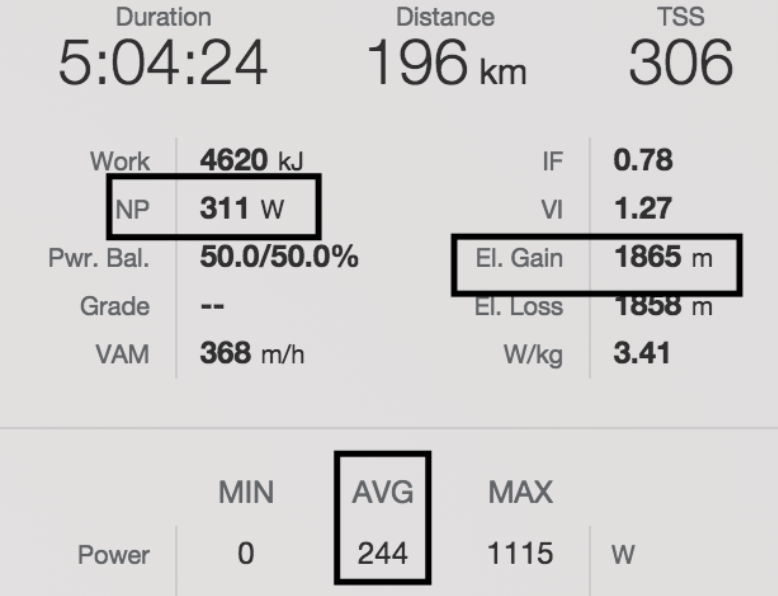
The Added Benefit of VO2 Max Training: Neuromuscular Adaptations
Thus, incorporating VO2 max intervals into your training program not only enhances your aerobic capacity but also leads to crucial race-specific neuromuscular adaptations. This is why I see VO2 max sessions have added benefits, it’s a win-win in most training plans.
You may have experienced this firsthand: after completing a solid winter training block, you might feel stronger and fitter than ever.
Yet, when the first races of the season roll around, your legs may still feel unprepared for the explosive efforts and constant accelerations that the race demands. This is a clear sign that race-specific training, particularly VO2 max sessions, is required.
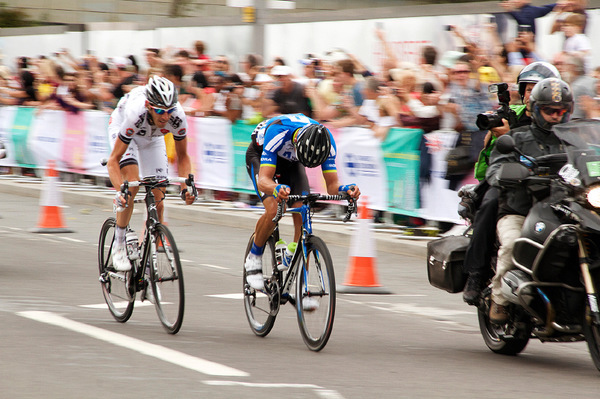
The good news is that you can sharpen this skill through targeted training.
Yes, participating in actual races is one way to train these specific efforts, as races naturally replicate the power surges and tactical demands you’ll encounter. However, racing can be time-consuming and costly, especially if your goal is to treat it solely as a training tool.
Here’s where structured VO2 max intervals, guided by your power meter, can offer a much faster and more efficient solution.
By pacing these intervals carefully, you can mimic the surges, recoveries, and neuromuscular demands of a race environment—without having to rely on an event to get that training stimulus.
Alternatively, engaging in friendly races or incorporating fartlek-style sessions into your training can serve a similar purpose.
These sessions are a bit more unstructured but are incredibly effective in simulating race-like scenarios, leading to the same power distribution and adaptation we aim for with VO2 max intervals.
Whether through structured or unstructured approaches, the key is creating those moments of high power output, followed by periods of recovery, which closely mirror the unpredictable nature of real racing.
Mimic your Race Power Profiles
By consistently pushing yourself to your upper limits in training, you’re not just building endurance—you’re preparing for those critical moments in a race where it’s not about holding a steady pace, but about reacting to the unpredictable surges and accelerations of the peloton.
VO2 max intervals help your body adapt to these repeated high-power efforts, which are essential for making the break, hanging with the lead group, or timing your attack just right.
The more time you spend training at VO2 max intensity, the better your body becomes at recovering from those short, intense bursts—leaving you fresher and more capable of handling decisive efforts as the race progresses.
When you analyze your post-training data, don’t just focus on average watts—take a close look at the power distribution curve.
Are you spending enough time at VO2 max power outputs?
Compare this to how much time you typically spend at these intensities in your previous races. If the answer is no, it’s time to reassess your training focus.
This ability to perform at ‘race speed’ is what distinguishes good riders from great ones when the competition heats up. The best part is that you can easily incorporate this type of training into your program and see significant improvements in race-day performance.
Given how unpredictable cycling races can be, it’s wise to use a variety of intervals to simulate the wide range of physiological demands you’ll face in competition.
Longer VO2 max sessions, such as 3 x (3+3 minutes), are excellent for building a strong aerobic engine, while repeated 30 on/30 off intervals are perfect for accumulating time at VO2 max power, driving key neuromuscular adaptations.
I recommend incorporating a mix of intervals into your weekly routine.
Additionally, scheduling a few races before your main target can provide invaluable race-specific conditioning.
For professional riders or those looking to simulate race intensity even further, motor pacing is another excellent tool, especially in the lead-up to key events. This type of training offers the most realistic simulation of race dynamics and can help prepare you for the rapid changes in pace that often define the most important moments in a race.
At first glance, motor pacing may seem like nothing more than a faster training ride, but in practice, the power profile often closely mirrors that of a real cycling race.
Please note that safety and traffic rules should always have higher priorities than race preparations.
Make VO2 Max Sessions a Cornerstone in your Training
Incorporating VO2 max workouts into your routine isn’t just about building fitness—it’s about race preparedness. It’s about teaching your body to thrive in those all-or-nothing moments that define the outcome of a race.
The riders who shine when it counts the most aren’t just the ones with high threshold power; they’re the ones who can repeatedly push to their limits and recover just as quickly.
So, if you want to improve your race-day performance, don’t neglect the importance of analyzing race power profiles. It’s time to start thinking beyond steady-state efforts and embrace the chaos of competitive cycling, where the ability to surge, react, and recover is what really counts.
Understanding Race-Specific Training: Beyond VO2 Max Intervals
In most races, it’s surprising to find that a significant portion of time—typically around 15 to 25%—is spent without any pedaling at all.
Whether you’re gliding downhill, tucked into the draft of other riders, or adjusting your position in the peloton, there are extended moments where your power output falls to zero. Despite this downtime, races remain incredibly demanding.
Why? Because the effort isn’t distributed in a steady, predictable manner. The power distribution curves in races aren’t bell-shaped like you will see in many typical training sessions.
To compensate for these frequent periods of coasting, cyclists push significantly harder during the active segments of the race. It’s not uncommon to see riders accumulating 30-60 minutes or more at intensities well above threshold power. This is a key difference between racing and training, where efforts are often more controlled and predictable.
While my overall approach to training emphasizes the value of structured workouts, guided by heart rate monitors or power meters to ensure precise pacing, it’s important to keep in mind that races don’t follow such neat patterns.
Most cycling competitions aren’t broken into perfectly timed 15-minute efforts at sub-threshold intensity. Instead, races are dynamic, with unpredictable shifts in intensity that require you to adapt on the fly.
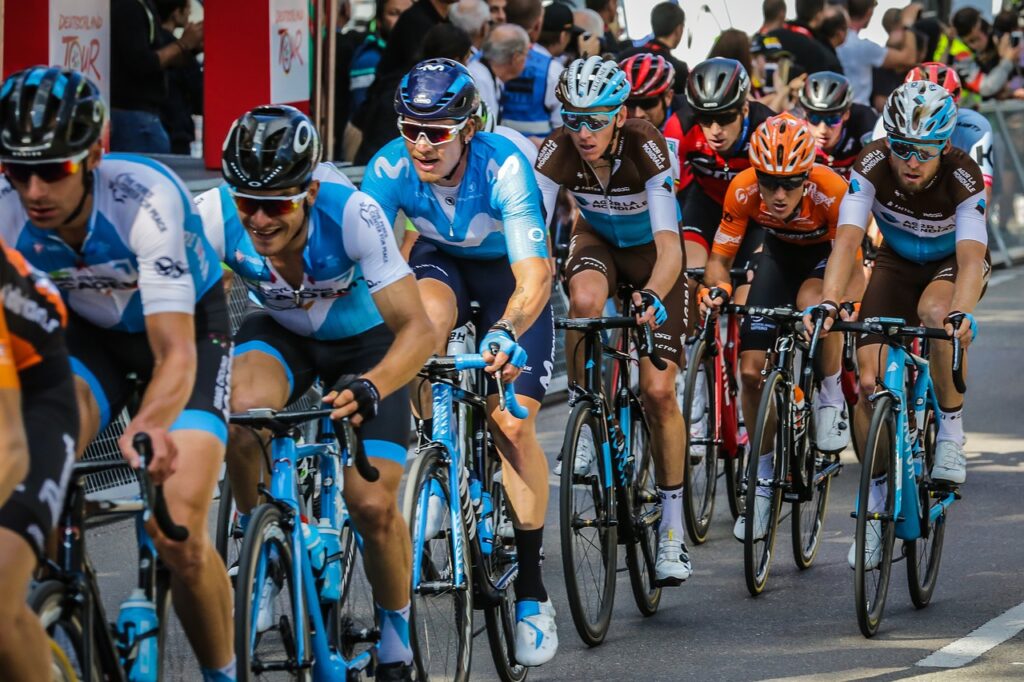
Transforming Race Power Profiles into Actionable Training Strategies
With these insights, it’s clear that our training – once in a while – needs to reflect the unpredictable nature of racing. If you want to prepare your body for race-day demands, you need to incorporate sessions that mimic real race situations.
Here’s how:
1. Group Rides for Tactical and Dynamic Efforts
One of the best ways to simulate race conditions is through weekly training sessions with other riders. Group rides naturally introduce variability—micro-adjustments to wind, positioning, and other riders’ movements force you to alternate between hard pedaling and coasting.
These rides help you practice those unpredictable surges where you may need to close a small gap, react to acceleration, or hold a wheel—all while recovering quickly during coasting or drafting.
2. Fartlek or Surge-Based Training
Another effective method to prepare for these varied race demands is incorporating fartlek-style training into your sessions.
Fartlek, or “speed play,” involves spontaneous changes in pace, just like in a race.
This type of training helps mimic the power distribution found in a competitive peloton, giving you time at high intensities above threshold power, followed by periods of lower intensity or coasting.
3. High-Intensity Intervals with Recovery Phases
Structured intervals can also be designed to reflect race-specific conditions. Instead of continuous efforts, mix short, intense intervals above threshold power with recovery phases of coasting or low-wattage pedaling.
For example, try workouts with 30-second or 1-minute surges well above threshold power, followed by 30 seconds of coasting or easy pedaling. This combination builds the ability to recover quickly and handle repeated efforts, which is key in a race environment.
I like to use multiple 30/30sec intervals to build up a volume of total time at high intensity.
4. Simulated Race Training
Whenever possible, participate in simulation races, either in organized group settings or through virtual platforms like Zwift.
These sessions offer a close approximation of actual race dynamics, complete with drafting, accelerations, and recovery periods. They provide the perfect chance to practice making decisions under pressure while also preparing your body for unpredictable power demands.
5. Spontaneous Challenges and Segment Races
Not every training session needs to be strictly structured—sometimes, adding an element of fun can provide unexpected benefits.
For example, set spontaneous challenges during your ride, such as racing your training partners to the next road sign or attempting to grab the KOM (King of the Mountain) on different Strava segments along your route.
These on-the-spot efforts mimic the sudden surges and sprints found in races, helping you practice high-intensity bursts while keeping your training enjoyable. Plus, it adds a competitive edge to your sessions, pushing you beyond your usual limits.
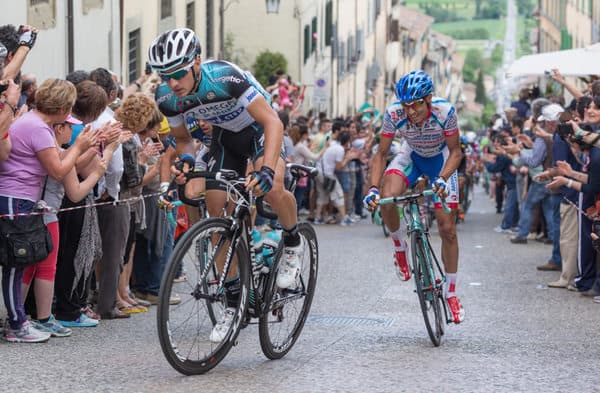
Conlusion: Boost Your Race-Ready Performance with Insights from Race Power Profiles
Traditional steady-state efforts and threshold training are important, but they’re only part of the equation.
To truly thrive in cycling races, your training must prepare you for the unexpected nature of race power profiles—the frequent transitions between coasting and surging at intensities close to your VO2 max power.
Including weekly group rides, fartlek sessions, or high-intensity interval training with active recovery will help you build the fitness required to handle these shifting demands.
The better you are at adapting to these unpredictable efforts, the more effective you’ll be at maintaining positioning, responding to surges, and conserving energy during critical race moments.
By shifting the focus of your training to include race-specific sessions, you can train your body not only to perform at high intensities but also to recover quickly—giving you the endurance and agility needed to succeed in competitive cycling.
If you have any questions or comments, feel free to leave a note in the comments section below.

I like this:
The riders who shine when it counts the most aren’t just the ones with high threshold power; they’re the ones who can repeatedly push to their limits and recover just as quickly.
Good words
Daniele
Thank you for the article and the insight. I am wondering whether VO2 training addresses cramping as the events stretch (in length) and, if applicable, what additional training is done to address this issue.
Thank you for your thoughtful question! Muscle cramps during longer cycling events are indeed a common issue, particularly in the later stages of intense races. These cramps often occur due to a combination of factors, such as high intensity, fatigue, and sometimes heat, which can lead to dehydration and loss of electrolytes. While it can feel like cramping is just bad luck, it’s closely tied to your fitness and conditioning.
VO2 max training helps improve your overall cardiovascular fitness, but cramps are more often linked to muscular fatigue. As you get stronger and your fitness improves, your muscles become more resilient, making cramping less likely (or requiring more extreme effort to trigger them).
To address cramping specifically, I recommend incorporating race-specific workouts into your training. These sessions simulate the repeated accelerations and efforts experienced during competition, better preparing your legs for the stresses that can lead to cramping.
I hope this helps, and feel free to reach out if you have more questions!